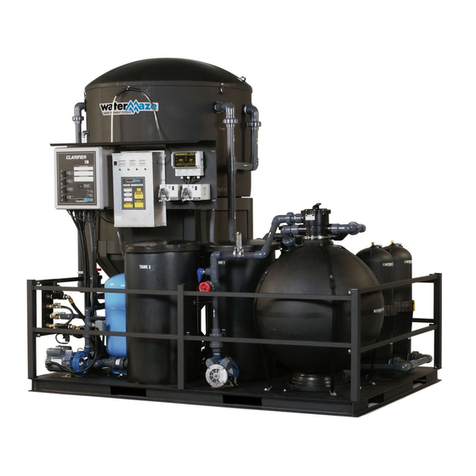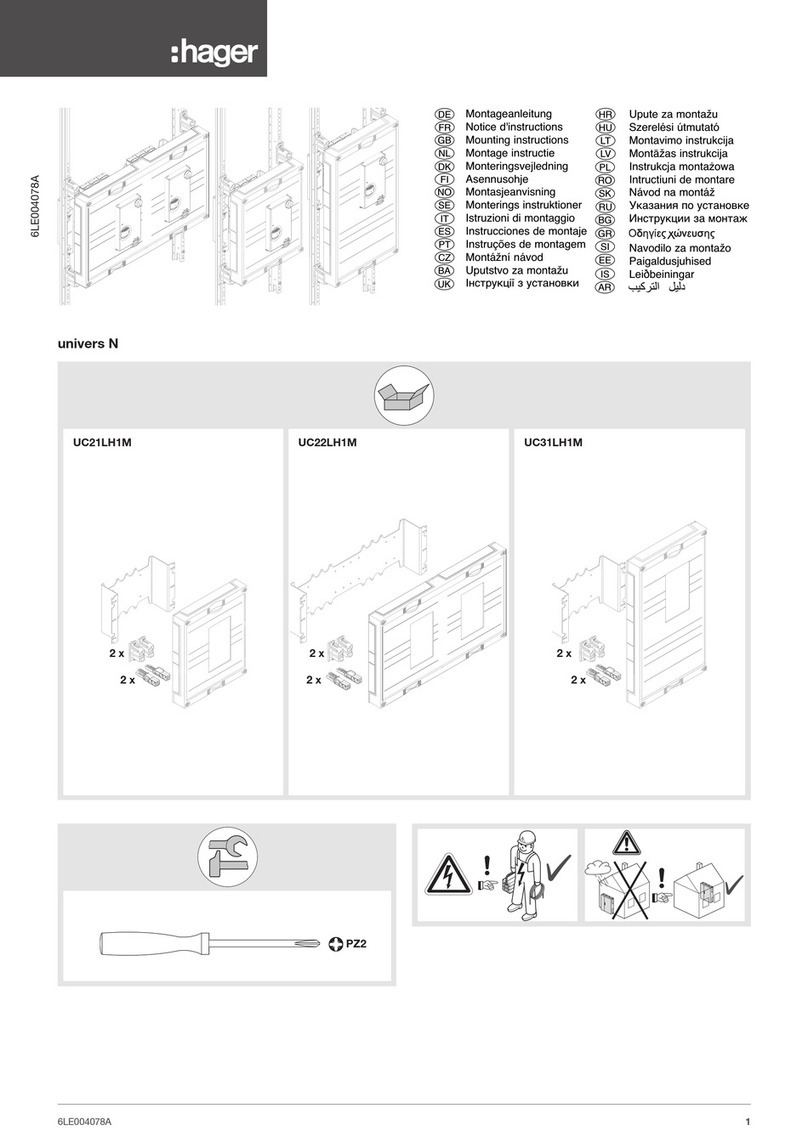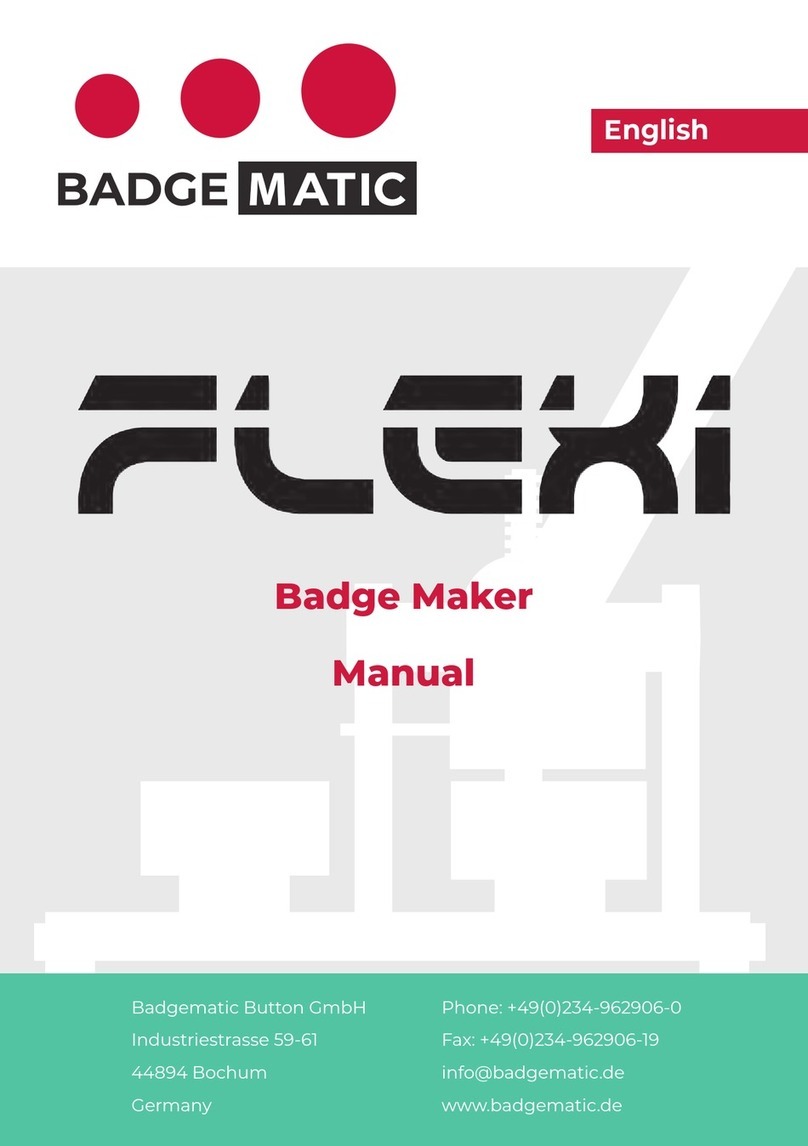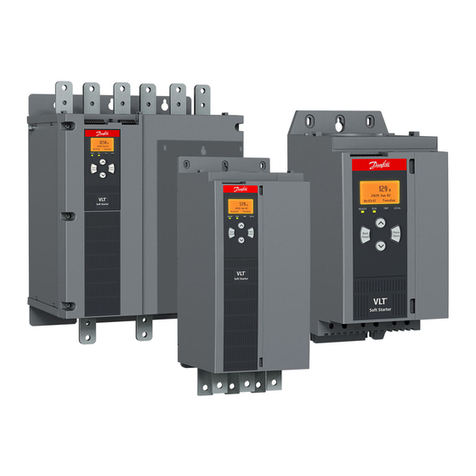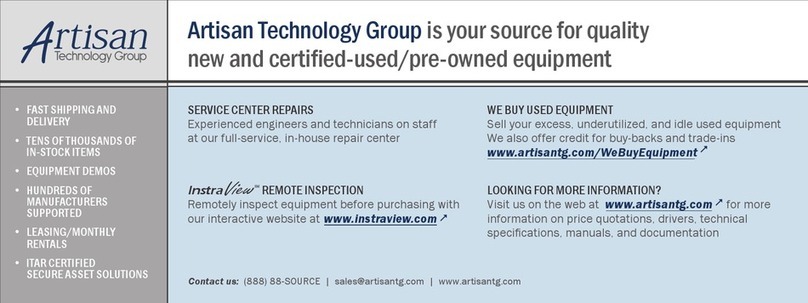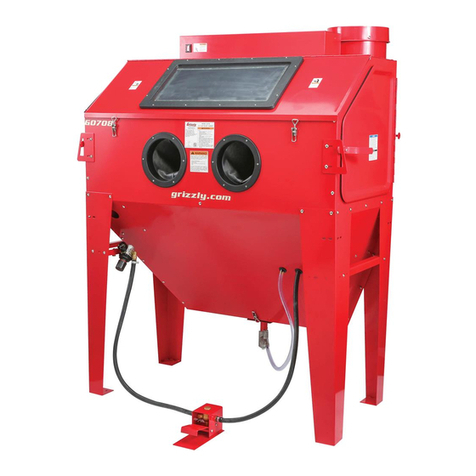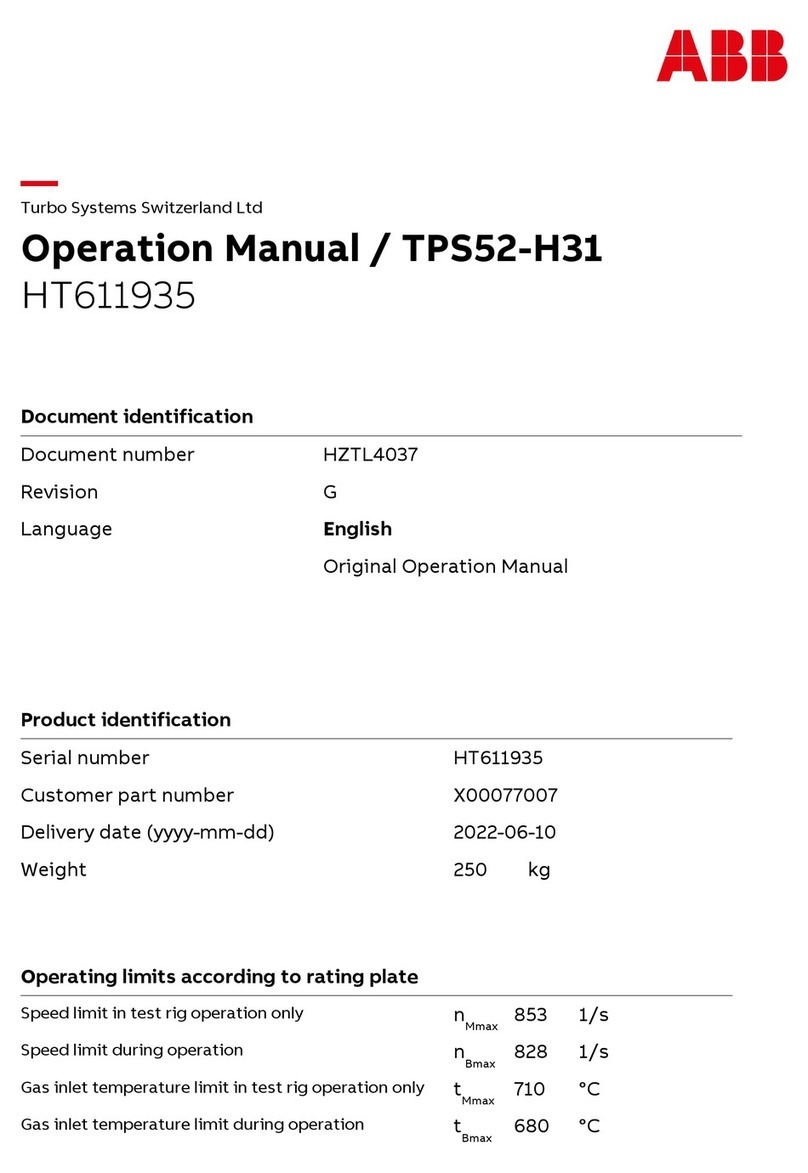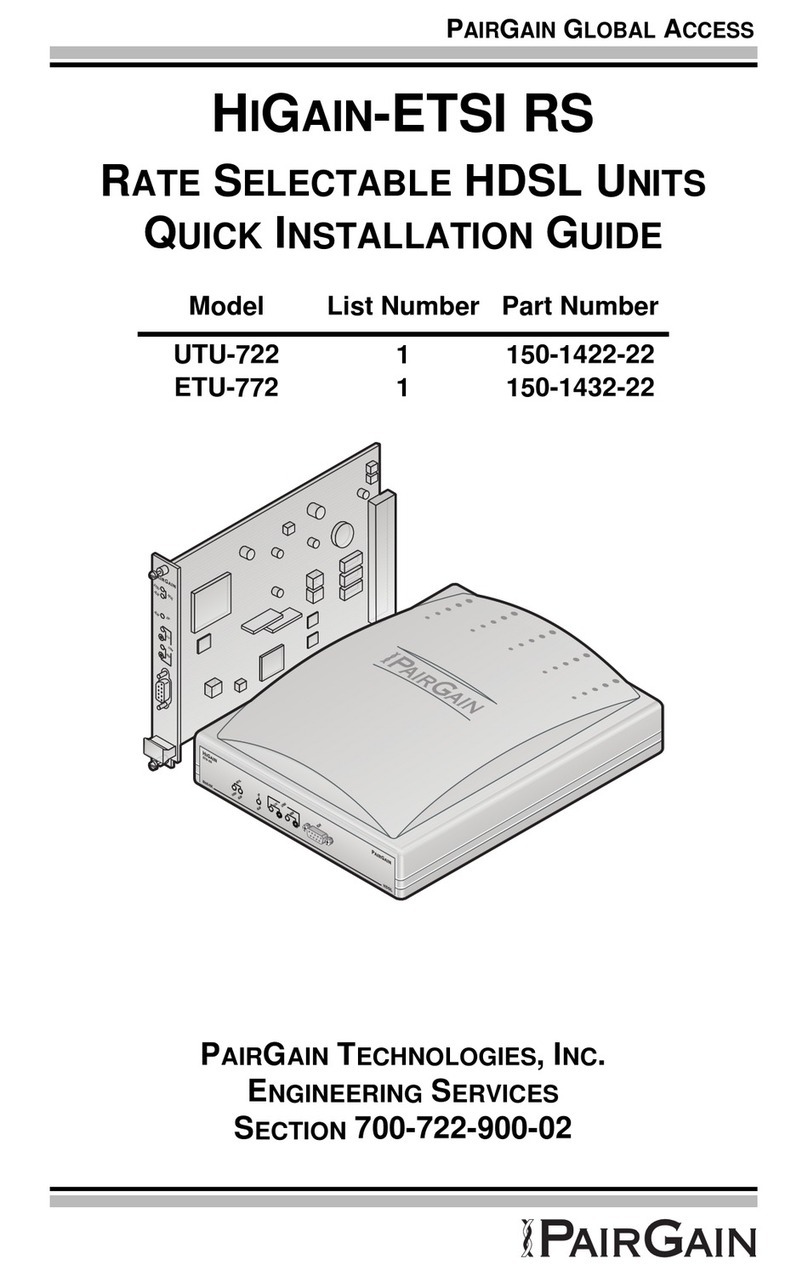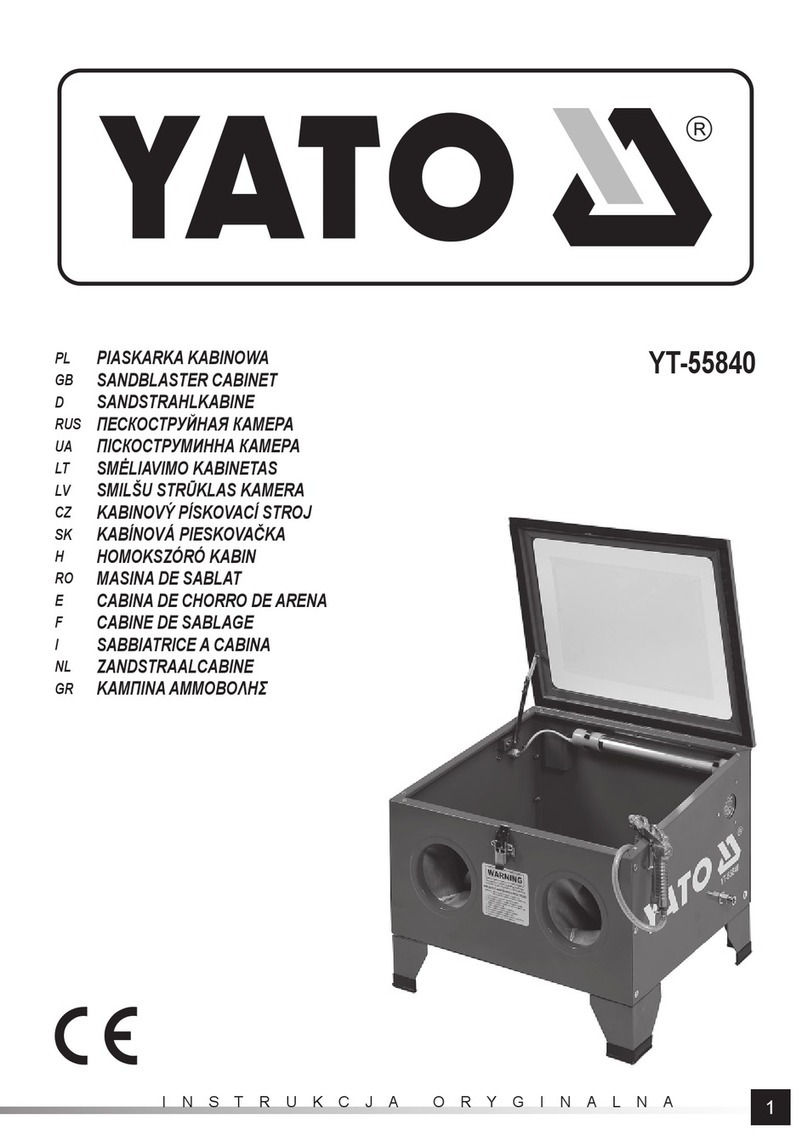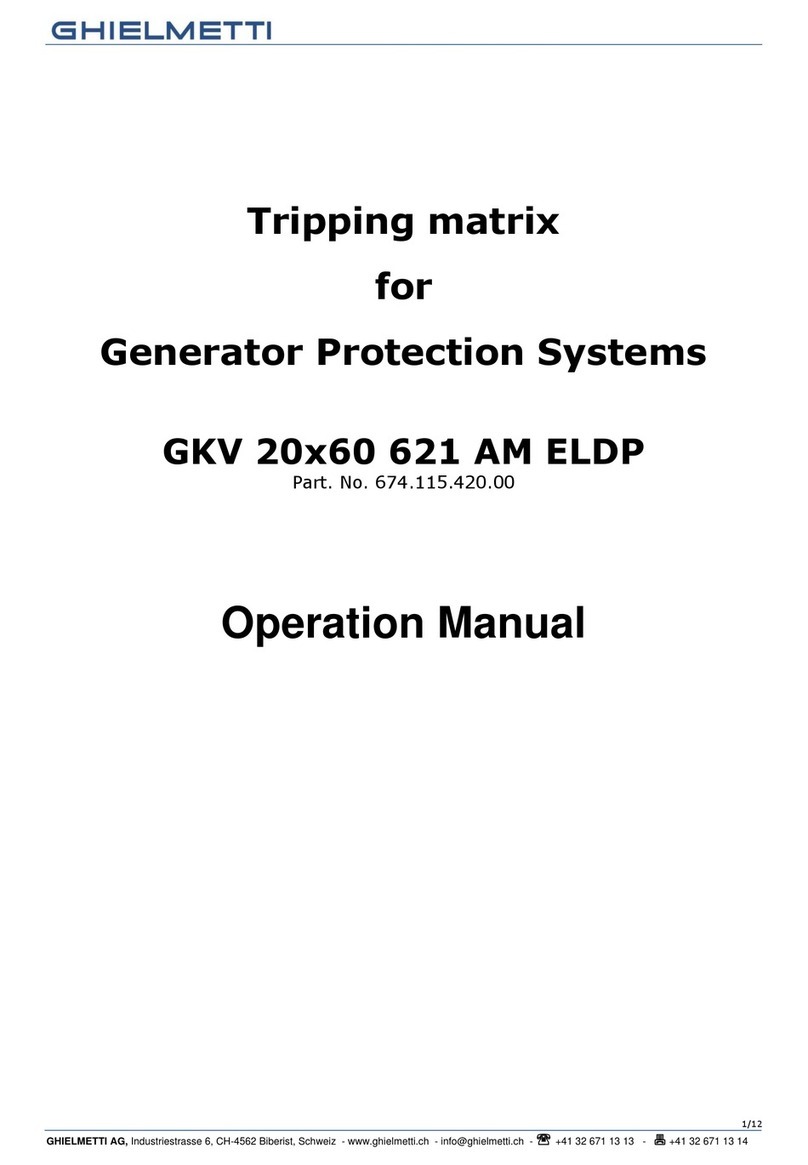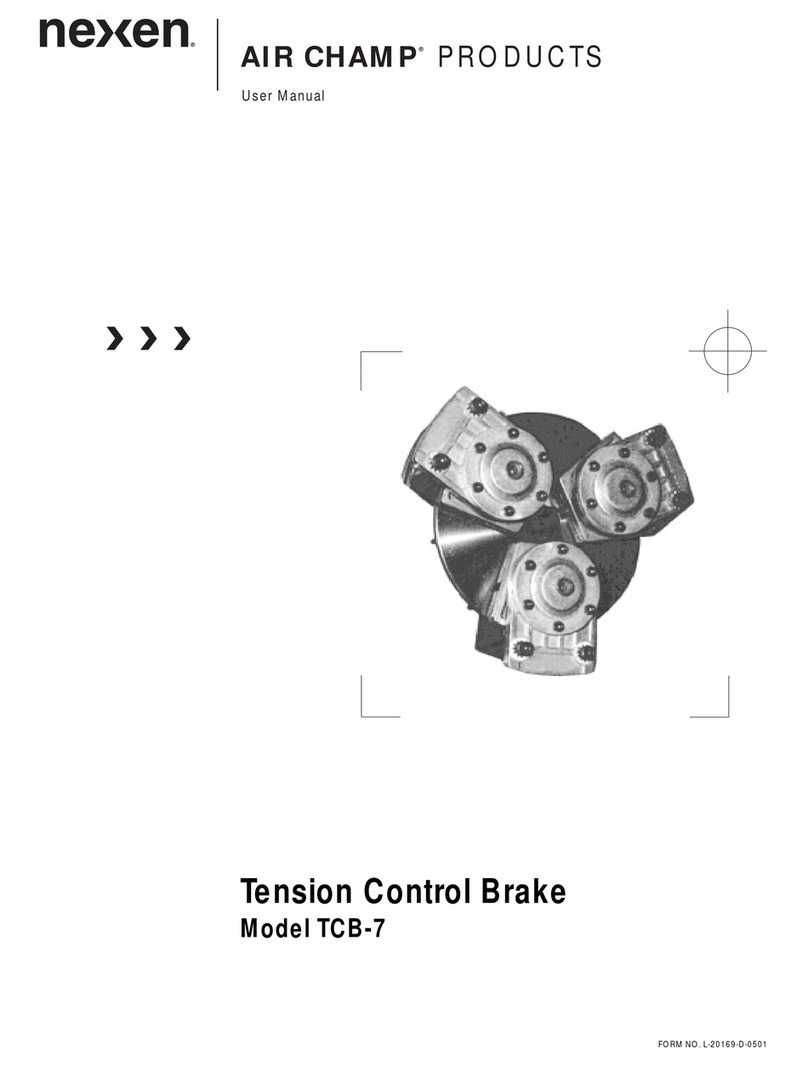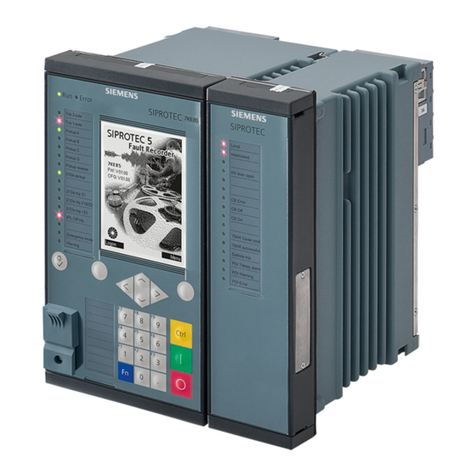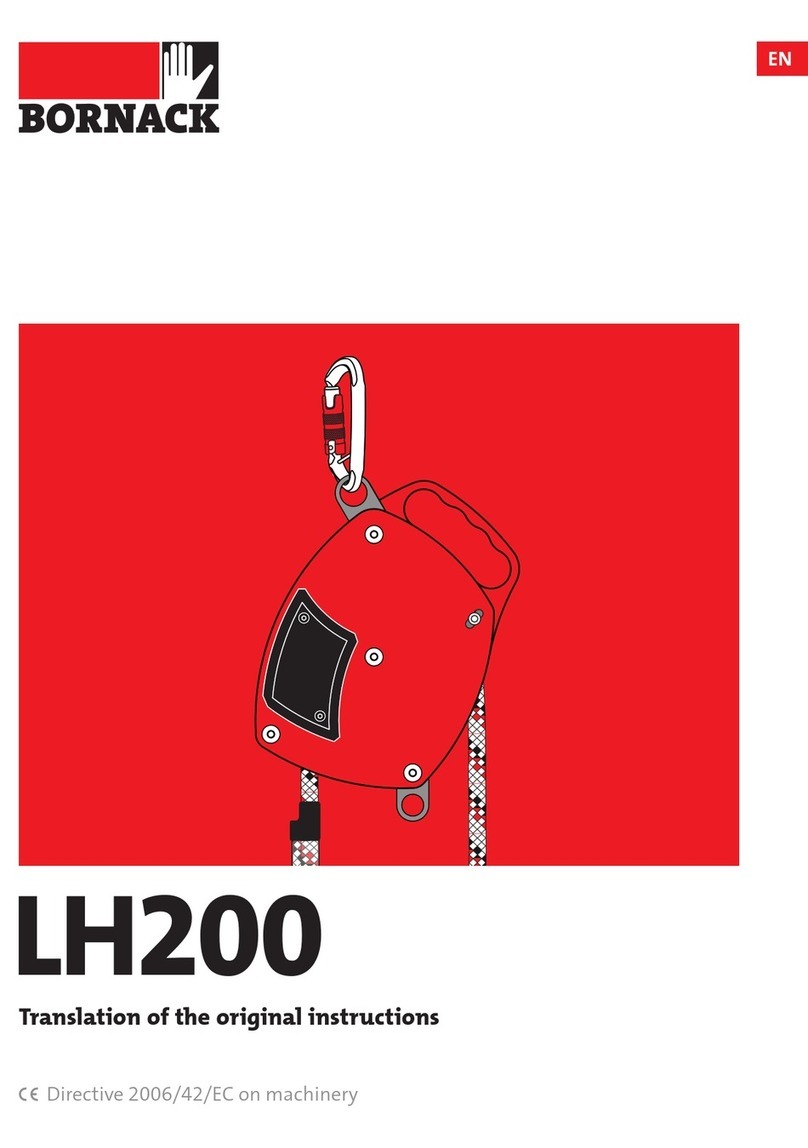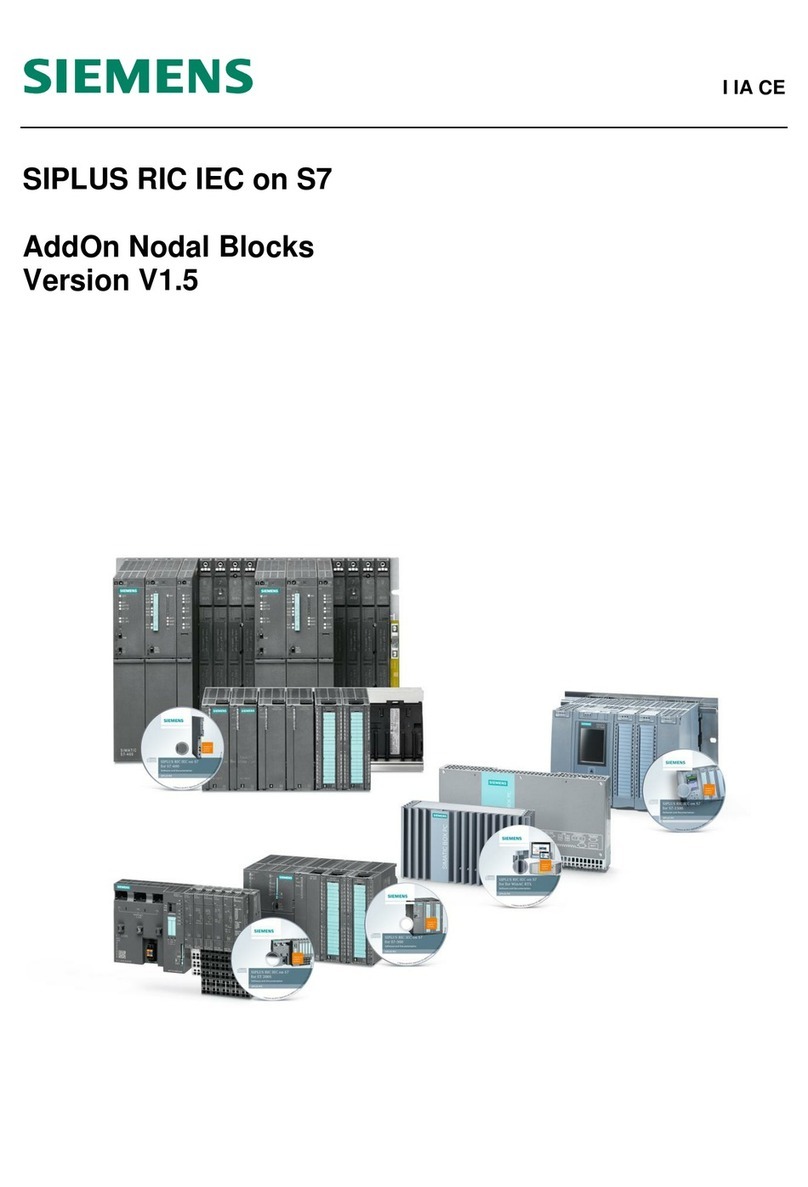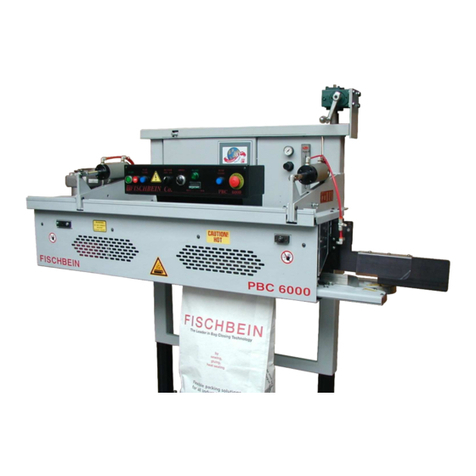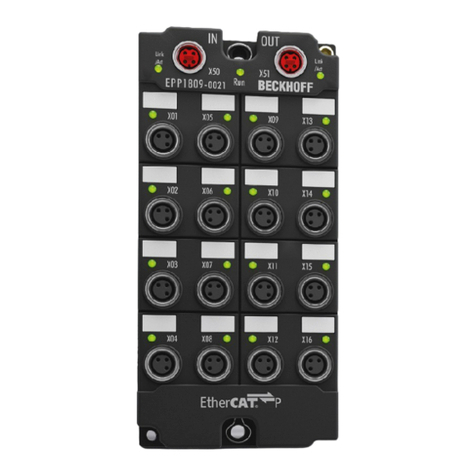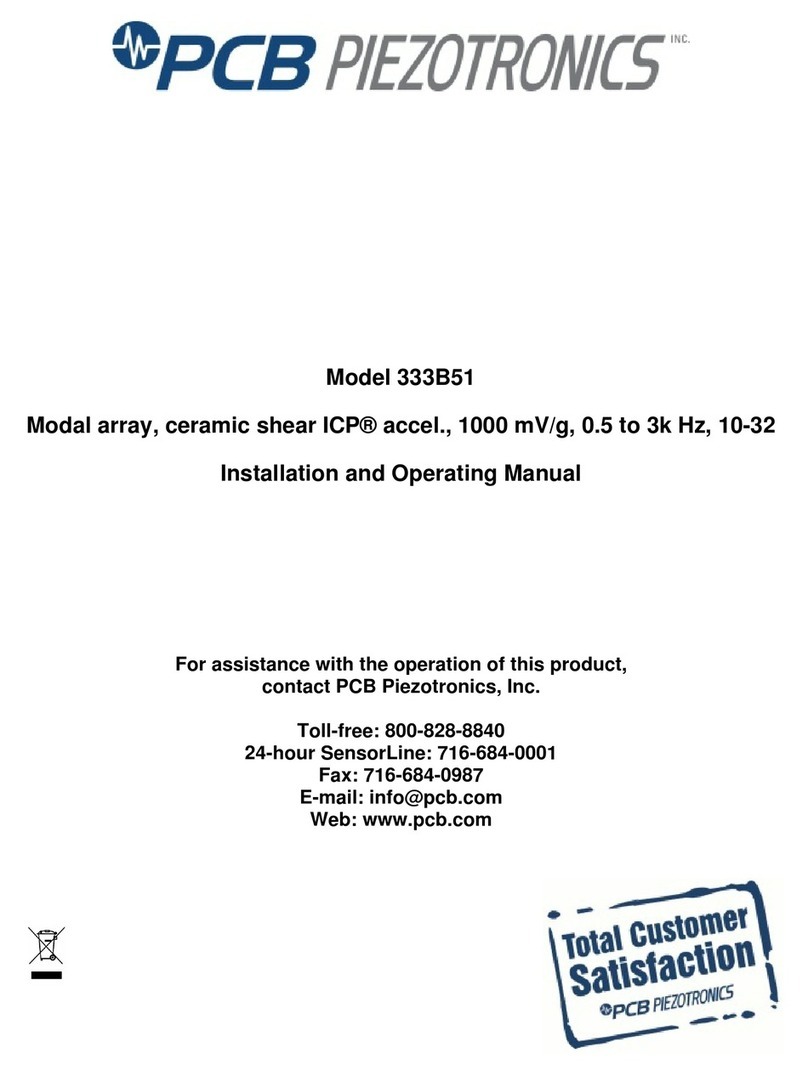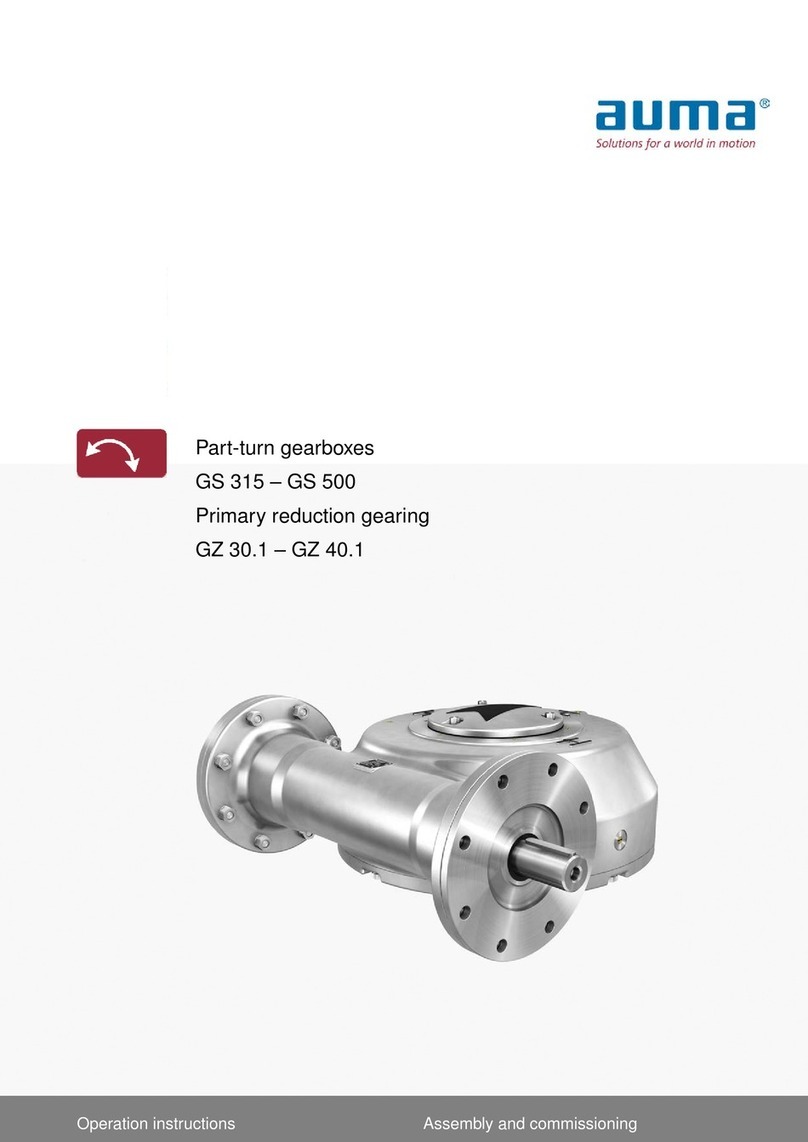Water Maze ALPHA-1500 User manual

OPERATOR’S MANUAL
For technical assistance or the Water Maze Dealer nearest you,
call (800) 535-0941 or (360) 833-2333 or consult our web page at www.wmaze.com
■ ALPHA-1500 ■ ALPHA-3100
ALPHA

CONTENTS
2
ALPHA • 1500-3100 • #8.913-964.0 • REV 5/11b
Introduction .................................................................................................................................... 4
Owner/User Responsibility ............................................................................................................ 4
Unpacking ...................................................................................................................................... 4
Safety Instructions ......................................................................................................................4-5
General Operating Techniques ................................................................................................ 5, 10
Installation................................................................................................................................6 -10
Start-Up ..................................................................................................................................11-12
Operation ..................................................................................................................................... 12
General Maintenance and Service .............................................................................................. 12
Chemical Maintenance ................................................................................................................ 13
Owner Chemical Maintenance Program ...................................................................................... 13
Daily Chemical Maintenance ....................................................................................................... 14
Optional ORP/pH Controller ...................................................................................................14-16
Submersible Sump Pumps .......................................................................................................... 17
Pump Safety Information ............................................................................................................. 17
Pre-installation/Sump Pit Info ...................................................................................................... 18
Pump Installation ......................................................................................................................... 18
Pump Operation ........................................................................................................................... 18
Pump Maintenance ...................................................................................................................... 18
Sump Pump Breakdown & Parts List ........................................................................................... 19
Peristaltic Metering Pump ............................................................................................................ 20
Ozone Generator Operation ........................................................................................................ 21
Ozone Generator Maintenance ................................................................................................... 21
Ozone Generator Testing ............................................................................................................ 22
Ozone Generator Breakdown ...................................................................................................... 23
Ozone Generator Parts List ......................................................................................................... 24
Inlet Side - Alpha-1500 Exploded View and Parts List ................................................................ 25
Inlet Side - Alpha-3100 Exploded View and Parts List ................................................................ 26
Right Side - Alpha-1500 Exploded View and Parts List ..........................................................27-28
Right Side - Alpha-3100 Exploded View and Parts List ..........................................................29-30
Discharge Side, Exploded View and Parts List ............................................................................ 31
Top View - Alpha 1500 ................................................................................................................ 32

Model Number ______________________________
Serial Number ______________________________
Date of Purchase ____________________________
The model and serial numbers will be found on a decal attached
to the Alpha. You should record both serial number and date of
purchase and keep in a safe place for future reference.
CONTENTS
3
ALPHA • 1500-3100 • #8.913-964.0 • REV 5/11b
Top View - Alpha-3100 ................................................................................................................ 33
Troubleshooting ......................................................................................................................34-35
Preventative Maintenance ........................................................................................................... 36
Specifications ............................................................................................................................... 37
Warranty ...................................................................................................................................... 38

4ALPHA SERIES OPERATOR’S MANUAL
ALpha 1500-3100 • #8.913-964.0 • REV. 5/11b
INTRODUCTION
Your owner’s manual has been prepared to provide you
with a simple and understandable guide for equipment
operation and maintenance, based on the latest product
information available at the time of printing. To keep
your machine in top running condition, follow the specific
maintenance and troubleshooting procedures given in
this manual. When ordering parts please specify model
and serial number.
This manual should be considered a permanent part
of the machine and should remain with the machine if
resold.
Owner/User Responsibility:
The owner and/or user must have an understanding of
the manufacturer’s operating instructions and warnings
before using this WATER MAZE machine. Warning
information should be emphasized and understood. If
the operator is not fluent in English, the manufacturer’s
instructions and warnings shall be read to and discussed
with the operator in the operator’s native language by
the purchaser/owner, making sure that the operator
comprehends its contents.
The owner and/or user must study and maintain the
manufacturers’ instructions for future reference.
NOTE: WATER MAZE, Inc. reserves the right to make
changes at anytime without incurring any obligations.
This manual should be considered a permanent
part of the machine and should remain with it if
machine is resold.
When ordering parts, please specify model and
serial number.
UNPACKING
1. Alpha module with cover
2. Two 1-1/2" (3.81 cm) ball valves for recycle system
3. 1-1/2" x 16' (3.81 cm x 4.89 m) recycle hose back
to pit
4. Ozone Generator
5. Operator’s Manual
6. Drain Valve Manifold
Note any damage to machine or components for claims
against the freight lines.
SAFETY INSTRUCTIONS
WARNING: To reduce the risk of
injury, read operating instruc-
tions carefully before using.
1. Read the owner’s manual
thoroughly. Failure to follow
the instructions could cause a
malfunction of the machine and
result in death, serious injury
and/or property damage.
WARNING: Wire the system for
correct voltage. See “Electrical”
section of this manual and motor
nameplate.
WARNING: Follow the wiring
instructions in this manual when
connecting the system to the
power lines.
WARNING: All wiring must be
performed by a qualified electrician.
WARNING: Meet the National Electrical Code and
local codes for all wiring.
2. The installation of the machine must comply with
local and/or national codes.
WARNING: Ground system before connecting to the
power supply.
3. This machine, when installed, must be electrically
grounded in accordance with local and/or national
codes. Do not spray water near electrical compo-
nents.
4. Never make adjustments on the machine while it
is in operation, except for those described in this
manual.
WARNING: Do not discharge
concentrations of flammable
or explosive fluids such as
gasoline, fuel oil, kerosene, etc.
into the Clarifier. Do not use in
explosive atmospheres. Failure
to follow this warning can pro-
duce an explosion resulting in
personal injury and/or property
damage.
5. Do not discharge gasoline or other volatile hydro-
carbons into the Alpha. This could cause a gas
vapor build-up under the lid which could become
an explosive mixture.
READ OPERATOR’S
MANUAL THOROUGHLY
PRIOR TO USE.
WARNING
WARNING
HAZARDOUS
VOLTAGE. CAN
SHOCK, BURN OR
CAUSE DEATH.
WARNING
RISK OF EXPLOSION:
DO NOT USE WITH
FLAMMABLE LIQUIDS.

ALPHA SERIES OPERATOR’S MANUAL 5
ALpha 1500-3100 • #8.913-964.0 • REV. 5/11b
WARNING: Wear protective eye-
wear, foot protection and protec-
tive clothing.
6. Before servicing the
machine, refer to all the MS-
DS’s on the material identified
in the waste stream. You must
comply with all warnings and
wear all protective clothing as
stated on the MSDS’s.
7. Protect from freezing and UV light.
8. Protect inlet and outlet hose from vehicle traffic and
sharp objects.
9. Be certain couplers on hoses have been locked
before operating.
10. Before disconnecting hoses, turn machine off.
11. Inlet water temperature must not exceed 95°F/35°C.
12. When making repairs disconnect machine from
electrical source.
13. The best insurance against an accident is precaution
and knowledge of the equipment.
14. WATER MAZE is not liable for any modifications
or the use of components not purchased from
WATER MAZE.
15. The Alpha and its components will freeze, and must
be located in a heated enclosure in cold climates.
16. Running the system without water will damage the
pump and may void the warranty.
17. The Alpha should be installed and started up by an
authorized WATER MAZE dealer.
18. The Alpha and its components must be protected
from weather, i.e. wind, rain, direct sun, etc.
GENERAL OPERATING
TECHNIQUES
The only operator adjustment to the Alpha is the valve
on the inlet to the Alpha. The flow to the Alpha should be
25 GPM (94.63 L/M) or less. The recommended nominal
flow rate is 10-15 GPM (37.85 - 56.78 L/M).
INSTALLATION
These machines are designed for indoor use only.
Machines must be stored indoors when not in use.
Location
The Alpha must be installed on a level surface, preferably
a concrete pad near the wastewater collection sump. In
cold climates the Alpha will freeze and should be located
in a heated enclosure. The Alpha must be located in a
heated enclosure for at least 24 hours prior to start up.
WARNING
PROTECTIVE
EYE WEAR AND
CLOTHING MUST
BE WORN.

6ALPHA SERIES OPERATOR’S MANUAL
ALpha 1500-3100 • #8.913-964.0 • REV. 5/11b
INSTALLATION
FRONT VIEW ALPHA-1500
(INLET END)
Figure 2
INSTALLATION
FRONT VIEW ALPHA-3100
(INLET END)
Check Valve
120V AC
Power In
Ozone Injector
Inlet
Connection
Ozone Check
Valve
Ozone Generator
On/Off Switch
Sump Pump Receptacle
Control Panel
Ozone Metering
Valve
Drain
Manifold
Control Panel
Figure 1
120V AC Power
In
Flow Control Valve
Ozone Metering Valve
Ozone Injector
Check Valve
Ozone Check Valve
Ozone Generator
On/Off Switch
Sump Pump Receptacle
Inlet Connection
Drain Manifold

ALPHA SERIES OPERATOR’S MANUAL 7
ALpha 1500-3100 • #8.913-964.0 • REV. 5/11b
INSTALLATION
SIDE VIEW ALPHA-1500
Figure 3
Recycle Line
▲
Ozone Generator (Far Side) Oil Skimmer Float Tank Assembly
Outlet
Oil Drain Line
Drain
Manifold
Inlet
Connection
INSTALLATION
SIDE VIEW ALPHA-3100
Figure 4
Oil Drain Line
Ozone Generator
▲
Recycle Line
Oil Skimmer Assembly
Outlet

8ALPHA SERIES OPERATOR’S MANUAL
ALpha 1500-3100 • #8.913-964.0 • REV. 5/11b
INSTALLATION
TOP VIEW ALPHA-1500
INSTALLATION
TOP VIEW ALPHA-3100
Figure 5
Oil Skimmer
Vertical Coalescing Plates
Liquid Level Switch
Ozone Generator
Horizontal Coalescing Plates
Drain Manifold
Figure 6
▲
Horizontal Coalescing Plates
Oil Sheen Filter
Pack
Oil Skimmer Float Tank
Assembly
Vertical Coalescing Plates
▲
Ozone Generator Liquid Level
Switch
Drain Manifold

ALPHA SERIES OPERATOR’S MANUAL 9
ALpha 1500-3100 • #8.913-964.0 • REV. 5/11b
INSTALLATION
AUTO DISCHARGE OPTION
TYPICAL INSTALLATION ALPHA ONLY
(discharged through sewer system)
Electric Ball Valve
Figure 8
Figure 7

10 ALPHA SERIES OPERATOR’S MANUAL
ALpha 1500-3100 • #8.913-964.0 • REV. 5/11b
Familiarization With Alpha
The Alpha machine consists of several separate items
which must be installed.
◆ The most obvious component is a stainless steel
separator tank which is the heart of the Alpha. Take
a minute to become familiar with this machine.
◆ Additional items furnished with the Alpha include:
• Perforated sump pump protection/installation
container.
• Sump pump level on/off float control for pump.
• 1-1/2" x 16' (3.81 cm x 4.89 m) recycle hose.
• 1-1/2" (3.81 cm) ball valve for recycle system.
• 1-1/2" x 25' (3.81 cm x 7.62 m) inlet hose with
quick connect (cut to length as needed).
• Drain valve manifold
Leveling Alpha Machine
The Alpha Machine must be set level both side to side
and end to end. This is important to assure the machine
will give you optimum performance.
Sump Pump/Level Control
◆ Your Alpha comes with a prepackaged perforated
protection container for the sump pump. This con-
tainer is designed to protect the pump from clogging
and damage from debris. There is a level on/off
control attached to the pump which plugs into the
Alpha and then the pump plugs into the float control
on the Alpha only installation.
• Insert the Level Control Float Tree into the strain
relief provided on top of the sump pump container
provided.
• Float tether length must be a minimum of
2" (5.08 cm ) long.
• The turnoff point for the float level control must
be 2" (5.08 cm) above the pump container.
If you have the optional Auto Discharge Kit, refer
to page 20 for proper float location.
• The float must travel its complete arc without:
- Water going over top of pit
- Float touching side walls or bottom
- Float interfering with electrical wiring, plumbing,
bottom or side walls of pit, or any other object.
◆ Lower the sump pump container, with pump and
float attached, into the sump. Check to assure the
float can operate freely.
◆ Connect the pump hose to the inlet of the Alpha.
This is a quick connect camlock fitting; be sure it is
secured.
◆ Plug the float into the electrical outlet on the Alpha
and then plug the power cord for the pump into the
back of the float.
◆ Secure the electrical cords of the pump and the float
to 1-1/2" (3.81 cm) water hose with nylon tie wraps.
Discharge
Connect the 1-1/2" (3.81 cm) discharge line to the male
camlock with the other end into the proper sewer dis-
charge (see Figure 7).
For discharge, close the recycle ball valve. During the
night or on weekends and holidays, open the recycle ball
valve. Add water to the collection pit until the pump starts.
Connect 1-1/2" (3.81 cm) hose to the recycle port on
the Alpha (see Figure 7). The recycle line should be
plumbed back to the collection pit so when the Alpha is
in the recycle mode, the water in all the pits is circulated
to control bacteria.
ORP/pH Controller Option
Install pH/ORP injectors and sensors per drawing on
page 28 or 30. Install sensor into pipe so sensor tip is
half way into pipe, touching fluid, but not touching bot-
tom of pipe. Follow instructions on page 14 to 15 and
instructions that come with controller.
Auto Discharge Option
Tie wrap the N/C and N/O floats to discharge pipe com-
ing off sump pump. Position both floats at the same level
towards the upper part of the pit.
Run float wires to electrical box on Alpha and wire ac-
cording to wire diagrams.
When the water level rises and lifts the floats in the pit,
the electric auto discharge valve rotates to discharge
water. When the water level drops and floats fall, the
electric ball valve rotates and directs water back to the
pits.
Electrical
The machine, when installed, must be electrically
grounded in accordance with local and/or national codes.
Check for proper electrical supply. Plug the cord into a
120V 15 amp electrical outlet. It is recommended that a
Ground Fault Circuit Interrupter be installed in the circuit
breaker for all Wash-Water equipment.
NOTE: Always test all electrical outlets for proper voltage
before plugging in any equipment.

ALPHA SERIES OPERATOR’S MANUAL 11
ALpha 1500-3100 • #8.913-964.0 • REV. 5/11b
START-UP
Check List Before Starting:
Yes No
1. Is Alpha level from side to side
and end to end? ___ ___
2. Is inlet hose connected to pump
and Alpha? ___ ___
3. Is outlet hose connected to Alpha
and directed to the drain? ___ ___
4. Is the voltage correct? ___ ___
5. Have the pump and float been
connected to the proper outlet
on Alpha? ___ ___
6. Is the recycle hose attached? ___ ___
Start-Up:
Add water to the sump to activate the float switch.
Turn the sump pump switch on the Alpha to “ON”
(see Figures 1 & 2).
Adjust the length of the Float Level Control to the
desired level.
Add additional water to the sump (or Alpha directly)
until the Alpha is full of water (water is exiting the
outlet).
Adjust the height of the gate inside the Alpha that
controls the flow into the oil skimmer. Skim off the
oil with a small amount of water. The oil will stay
in the oil skimmer while the water returns to the pit
through the return line.
Check the machine for leaks (the machine was
hydrostatically tested at the factory but may have
been damaged in shipment).
Check that the machine is level side to side by ob-
serving the flow over the baffles. Shut off the inlet
valve and gradually reopen it. At low flow rates when
the machine is level, flow will be even across the
complete top of the baffle.
Check level, end to end, by observing the water level
in relation to the coalescing pack.
Check the overflow shutoff switch by manually lifting
the liquid level switch (see Figures 5 & 6).
Check the recycle line to make sure the water is
flowing back to the collection pit.
Figure 9
1. ALL INFORMATION IS FOR REFERENCE ONLY AND
IS INTENDED AS A GUIDELINE TO BE USED BY A
PROFESSIONAL ENGINEER OR ARCHITECT IN PRE-
PARING A FINAL DECISION TO MEET THE SPECIFIC
SITE REQUIREMENT.
2. WATERMAZE SYSTEM SHOULD BE INCLUDED WITH
PROPER FREEZE PROTECTION.
2' x 2' Removable Steel Grating
Concrete
1-1/2" Supply Hose
to Alpha
3" Pipe from Collection Pit to
Sump Pump
Float #1 (N/O)
Down Will Turn
Off Sump Pump

12 ALPHA SERIES OPERATOR’S MANUAL
ALpha 1500-3100 • #8.913-964.0 • REV. 5/11b
Start-Up Check List:
Yes No
1. Sump pump plugged into float
level control on Alpha? ___ ___
2. Sump pump float control working? ___ ___
3. High level limit switch working? ___ ___
4. Oil skimmer working properly? ___ ___
5. Is water in Alpha level? ___ ___
6. Recycle system working? ___ ___
7. Level control float working? ___ ___
OPERATION
After start-up, the only operational adjustment on the
Alpha is the inlet flow control valve (see Figures 1 & 2).
Your sump pump flowrate may exceed the Alpha’s oil/
water separation capacity. Throttle the valve on the
Alpha until the incoming water is the same flow as the
recycle water through the recycle line going back to the
collection pit.
This will give adequate flow through the ozone injector
to meter the ozone generator properly (see Figure 16).
If at anytime the incoming flow is adjusted, the ozone
generator must be metered again.
GENERAL MAINTENANCE
AND SERVICE
Periodic Maintenance
Oil Skimmer Collection Tank
Monitor the level of oil in the oil skimmer. Empty
as needed.
Solids Removal
Settled solids are collected in the inlet solids col-
lection chamber. The solids must be removed peri-
odically as dictated by the dirt load coming into the
machine. The procedure for removal is as follows.
• Disconnect the machine from the electrical power
source.
• Before opening the drain valve, be sure the
flow of solids is directed to the collection pit.
Open each drain valve individually and remove
the solids.
• Remove the vertical coalescing pack (see Figures
5 & 6 for location). To remove, lift with the nylon
strap that surrounds the coalescing pack.
• After removal of the vertical coalescing pack,
hose out the remaining solids in the bottom of the
chamber.
• Replace the vertical coalescing pack and close
valve. NOTE: The vertical coalescing pack can
be cleaned, if desired, by washing it with a garden
hose or a pressure washer.
• If the solids chamber cannot be drained back to
the collection pit, you can use the WATER MAZE
Pit Cleaner and Sludge Cart for the solids removal
on the Alpha 3100. You can use a shop vac for
the Alpha 1500.
Service
Check the electrical cords to assure they are safe,
with no damage or cracking.
Check the inlet and outlet hoses for leaks or damage.
Oil Sheen Filter Pack
The oil sheen filter pack should be removed and the
media replaced once a year or as needed (Alpha
3100).
Remove the filter pack (suitcase like filter, see Figure
6 for location) by removing the retaining bracket and
lifting up with the handles on the filter, as shown
below.
Figure 10
Slide the filter case back into the Alpha.
• The slots on top of the case should be facing the
inlet.
• Push the filter firmly down and replace the retain-
ing bracket.
NOTE: If the filter media needs servicing prior to the
yearly change out, the filter can be removed and separat-
ed. Periodic cleaning of the filter media can be performed
by using a hot water pressure washer. NEVER clean the
filter with detergents as this will cause a deterioration of
the media’s ability to attract oil and dirt.
Water
Outlet
Oil Sheen Filter Pack
▲
Lifting Handles
Hold
Down
Clips
Water
Inlets

ALPHA SERIES OPERATOR’S MANUAL 13
ALpha 1500-3100 • #8.913-964.0 • REV. 5/11b
CHEMICAL MAINTENANCE
PROGRAM
Owner Chemical Maintenance Program to
Maintain Water Quality:
Daily monitoring and adjustment of WATER MAZE water
chemistry is essential. If not monitored and controlled,
the recycled water becomes chemically unbalanced,
resulting in a host of problems such as algae and bac-
teria growth, obnoxious odors, iron discoloration and
ultimately is unfit for reuse or sewer discharge.
The daily monitoring and adjustment maintenance
program, if followed, will provide suitable water. The
proper maintenance of the water is not complicated and
depends upon a few basic principles:
1. PHYSICAL - effective filtration and recirculation
of the water
Effective recirculation of the water through the collection
pit, and the Alpha system is achieved only if the system
is utilized often (daily 6-8 hours or more) or if the system
is set to recirculate the water throughout the total system.
WATER MAZE has provided controls and procedures to
achieve continuous effective water recirculation through-
out the process. The Alpha, when operated properly,
achieves effective filtration and recirculation.
2. CHEMICAL - proper adjustment of alkalinity and
pH
The most important factor to control and maintain is the
pH of the water (i.e. the acidity or alkalinity). If the water
is acidic (low pH) it will dissolve iron into solution. The
presence of iron of more than 0.2 ppm will result in rusty
staining of virtually anything the water comes in contact
with. Alkaline water can cause cloudiness and greatly
reduces the effectiveness of chlorination. Many clean-
ing detergents are alkaline and will make the water too
alkaline. The proper pH range to maintain is 6.8 - 7.2.
Alkalinity refers to the soluble salts in the water. These
include bicarbonates, carbonates, hydroxides and other
alkali compounds. The water's total alkalinity controls
its resistance (buffering ability) to large fluctuations in
pH levels.
Another factor which should be monitored for proper
water chemistry balancing is calcium hardness. The
presence of too much calcium can lead to the formula-
tion of scale.
3. BIOLOGICAL - adequate disinfection, bacteria,
and odor control
Chlorination and ozonization are used to control bacte-
ria, and odor formation. For chlorine to be effective, it
must be available as free chlorine. If the proper pH and
alkalinity is not maintained, or if the water contains dirt
particles, the chlorine will be combined chlorine and not
be effective in the control of algae and bacteria growth.
Combined chlorine has only 1/15th the strength of free
chlorine.
Inadequate or improper addition of chlorine could result
in bacteria growth. Once bacterial growth starts, the
system must be shock treated. It is best to minimize the
chances of bacteria problems.
The killing of bacteria by chlorine exists in two phases:
1. The penetration of the active germicidal principal
(hypochlorous acid) into the bacterial cell and
2. The chemical combination of this ingredient with the
protoplasm (the complex composition which forms
the essential part of plant and animal cells). This
combination is directly responsible for the death of
the organism.
The activity of this germicidal effect is reduced in alka-
line solutions (those with a pH greater than 7.5) and
expressed as follows:
pH % of Effectiveness
4.0 100.0
5.0 99.6
6.0 95.8
7.0 69.7
8.0 18.7
9.0 2.2
10.0 0.2
Hypochlorite when added to solutions with a pH lower
than 6.0 can produce oxide which is toxic. In vehicle
washing, almost all cleaning compounds are alkaline
in nature. Hypochlorite will still control bacterial growth
and thus smell at higher alkaline ranges, but as the table
indicates, its effectiveness is reduced.
To compensate for this inhibited activity, a larger quantity
of hypochlorite is used. This controls bacterial growth,
but also increases operational costs.
Typical hypochlorite has a pH of approximately 11.6.
This high pH increases the pH of holding tank water,
making pH adjustment more difficult.
Trichloro-S-Triazine Trione is a chlorine compound
which has a pH of 3.0 and when added to holding tanks
aids in the reduction of tank pH levels.
Unlike hypochlorite, which is usually 15 percent chlorine
and will produce sodium or calcium salts in holding tanks,
these new products are 99 percent chlorine which means
that if a solid “puck” of chlorine is used, the total effec-
tiveness of the puck is superior to that of hypochlorite
and no negative by-products are produced.

14 ALPHA SERIES OPERATOR’S MANUAL
ALpha 1500-3100 • #8.913-964.0 • REV. 5/11b
OPTIONAL ORP/PH DIGITAL
CONTROLLER - MODEL 250
The Oxidation Reduction Potential (ORP) and pH of the
water stream are controlled automatically by the digital
controller. The controller receives input from the ORP
sensor on the activity of the sanitizer and input from the
pH sensor on the pH level of the waste stream. The level
of ORP and pH being sensed and the requested levels
programmed in the controller will determine if outputs
from the controller are sent to the feed pumps. If sanitizer
or pH adjustments are needed, the output will turn the
corresponding feed pump on. This will inject the required
sanitizer or pH until programmed levels are reached and
the feed pump will stop.
Acid/Base Jumper
Because most systems are dealing with a high pH situ-
aton, the controller is factory set for acid feed. If you re-
quire a base feed, turn power off to entire system. Open
plastic door on the controller, remove the four screws on
display board, carefully pull back board and turn over.
Reposition the JP14 jumper to the base position. Return
board and door to original position.
Start-Up
Turn switch on right side of controller to the "ON" posi-
tion. Upon power-up the controller will display "109"
and then "ACD" for acid feed or "BSE" for base feed,
depending on your requirements.
Feed Mode
The feed mode for the pH and sanitizer can be set to
"OFF", MANUAL or AUTOMATIC. Set to Automatic. To
select the desired feed mode, press [ORP] or [pH] until
the corresponding LED indicator light is illuminated.
There is a short delay before activation. NOTE: Holding
the switch for more than 5 seconds resets the setpoint
and calibration for [ORP] or [pH] to original factory
values.
ORP Control Setpoint
The ORP setpoint is factory set at 550mV, which is rec-
ommended to maintain water quality by killing germs and
bacteria. There is no need for ORP calibration.
The sanitizing concentration required to generate a de-
sired ORP value varies with pH and overall water quality,
particularily Total Dissolved Solids (TDS) concentration
and organic load.
To change the ORP control setpoint:
Press [SETPOINT].
Press [ORP]; the display flashes
Use [UP] and [DOWN] arrows to adjust the ORP value
Press [SETPOINT} again to save the new value.
DAILY CHEMICAL
MAINTENANCE
Step 1. Collect a water sample from the outlet of the
Alpha. NOTE: Be sure that the water is circulating from
the pit through the Alpha and back to pit.
Step 2. Using the test strips supplied, measure:
A. The pH.
B. The residual chlorine (systems with chlorine).
C. The alkalinity.
D. The calcium hardness.
Step 3. If the pH is 6.8-7.2 go to Step 4. If not, adjust the
pH of the water that is recycled between the Alpha and
the pit to pH 6.8-7.2. Muriatic acid or Alum can be used
to lower the pH. Soda ash (sodium carbonate) or caustic
soda (sodium hydroxide) can be used to raise the pH.
Adjust the pH gradually, allowing complete mixing after
adding a chemical. Take a new sample, read the pH
and continue to adjust gradually until the desired pH is
achieved.
Step 4. The total alkalinity should be between 50-150
ppm. If the total alkalinity is too low, add sodium bicar-
bonate to raise it. If total alkalinity is too high, add muriatic
acid to bring it within acceptable range. This will also
decrease the pH. If the pH goes below 6.8, add sodium
bicarbonate to increase the pH. This procedure may
have to be repeated several times to get the pH and a
total alkalinity into the proper range.
Step 5. The calcium hardness should not exceed 25
grains. If it is too high, some water must be removed
from the system and fresh makeup water added. Alter-
natively, an ion exchange water softener may have to
be added to the system to reduce and maintain lower
calcium hardness levels.
Step 6. (Systems using a chlorinator) Free chlorine
levels should be 1-2 ppm and must be maintained by
adjusting the flow through the automatic chlorinator, or
the regular addition of liquid chlorine. A 10-50% con-
centrated liquid chlorine is available. Household bleach
can be used, but contains only 5% chlorine. Chlorine
continually dissipates and becomes used up and the
chlorine level must be adjusted daily. Remember, chlo-
rine is most effective when the pH level is correct (7.0).
Initially, extra time is needed to achieve proper water
chemistry balance. However, once achieved, it can be
easily maintained in a minimum amount of time with daily
monitoring and adjustment.

ALPHA SERIES OPERATOR’S MANUAL 15
ALpha 1500-3100 • #8.913-964.0 • REV. 5/11b
pH Calibration
To calibrate the pH, use a reliable, fresh test kit (Phenol
Red). Note the value of the pH and compare it to the
display value.
To change the pH calibration:
Press [CALIBRATION]
Press [pH]; the display flashes
Use the [UP] and [DOWN] arrows to adjust the pH value
Press the [CALIBRATION] again to save the new value.
Out-of-Range Alarms
The out-of-range alarms are factory set at 450 and
650mV for ORP and 6.5 to 7.5 for pH. If the ORP is
below the low limit, the red LED alarm flashes but the
sanitizer feed continues.
If the pH limits are exceeded, the red LED alarm flashes
and the pH feeder continues.
To change an alarm limit:
Press [LOW LIMIT] or [HIGH LIMIT]
Use the [UP] and [DOWN] arrows to adjust the value
Press [LOW LIMIT] or [HIGH LIMIT] again.
CAUTION: Increasing the out-of-range limits may
casue overfeeding of chemicals.
ORP AND PH SENSOR
MAINTENANCE
The controller is virtually maintenance free. The
enclosure and front panel can be cleaned with a soft
cloth moistened with a mild soap and water solution or a
glass cleaner. Do not use abrasives or harsh chemicals.
Sensor Cleaning/Testing
The sensor tips must be kept clean and free from
chemical deposits and contamination to function prop-
erly. After saturation in the
waste stream, the sensors
may need to be cleaned
on a weekly or monthly
basis depending on the
water quality and other
facility-specific character-
istics. Slow response and
inconsistent readings are
indications that the sensors
are in need of cleaning.
B W G
B W G
B W G
ORP R W B Power pH
Rotary
Flowswitch
Dry-Contact
Alarm
B=black, W=white, G=green, R=red
66-123 66-122
To clean a sensor, carefully remove it from the com-
pression fitting or holding bracket. Clean the tip of the
sensor with a mild liquid detergent (Joy, etc) solution.
Rinse with fresh water and soak the sensor in a mild
acid solution for five minutes. Rinse with fresh water
and reinstall the sensor.
To check sensor for proper operation place a small
amount of white vinegar, muriatic or hydrochloric acid
into a cup and place sensor probe into solution. For the
pH sensor, the needle should drop. For the ORP sensor,
the needle should rise.
NOTE: Only clean one sensor at a time. Sensors must
stay in some kind of liquid at all times.
Sensor Replacement
For preventative maintenance it is also recommended
to replace the sensors on an annual basis or as perfor-
mance diminishes.
Sensor Storage
Extended exposure to atmospheric conditions will cause
the sensor tips to dry out. Always remove and properly
store the sensors if they are to be winterized or inactive.
Store the sensors with the original cap provided, making
sure that each cap is filled with clean water. If the stor-
age containers have been misplaced, store the sensors
individually in small glass or plastic containers with clean
water covering the sensor tips.
Terminal Block Wiring

16 ALPHA SERIES OPERATOR’S MANUAL
ALpha 1500-3100 • #8.913-964.0 • REV. 5/11b
TROUBLESHOOTING - ORP-pH SENSORS
PROBLEM SOLUTION
NO LIGHTS ARE ON
WITH POWER ON
Check for power going to controller.
Check for damaged power connector.
Check internal fuse (1A slow blo) marked F3 on control board.
ILLOGICAL pH AND ORP
VALUE DISPLAYS
The sensor cable connections may be reversed. Verify that
the sensor cables are properly connected to their respective
BNC connectors on the controller unit.
ORP FEEDER
DOES NOT
ACTIVATE
Make sure the AUTO feed light for ORP is on.
Check the ORP setpoint.
Check ORP relay fuse (5A slow blow) marked F2 on control board.
pH FEEDER DOES NOT
ACTIVATE
Verify that the acid/base feed jumper JP14 on the control
board is properly set.
Make sure the AUTO feed light for pH is on.
Check the pH relay fuse (5A slow blow) marked F2 on control board.
pH REQUIRES FREQUENT
CALIBRATION
Clean or replace the sensor as outlined in the maintenance section.
INCONSISTANT OR SLOW
pH OR ORP READINGS
Verify that the sensor cables are properly connected to their
respective BNC connectors and the controller unit.
Clean or replace the sensor as outlined in the maintenance section.
Replace the sensors if needed.
CHEMICAL FEEDER RUNS
CONTINUOUSLY
Make sure the AUTO feed mode is selected.
Verify that the chemical feeders are properly connected to
their respective connectors or controller unit.
All controllers are manufactured to the highest quality standards and thoroughly tested before leaving the factory.
State-of-the-art designs and fabrication technology should ensure years for trouble-free operation.

ALPHA SERIES OPERATOR’S MANUAL 17
ALpha 1500-3100 • #8.913-964.0 • REV. 5/11b
b. Keep work area clean, uncluttered and properly
lighted — replace all unused equipment.
c. Keep visitors at a safe distance from work area.
d. Make workshop childproof — with padlocks, master
switches, and by removing starter keys.
10. When wiring an electrically driven pump, follow all
electrical and safety codes, as well as the most
recent National Electrical Code (NEC) and the Oc-
cupational Safety and Health Act (OSHA).
WARNING: Risk of electric shock.
This equipment is only for use
on 115 volt (single phase) and is
equipped with an approved 3-prong
conductor cord and 3-prong ground-
ing-type plug (as shown in Figures
1 & 2) for your protection against
shock hazards. It should be plugged
directly into a properly installed and
grounded 3-prong grounding-type
receptacle. It is recommended that a Ground Fault
Circuit Interrupter be installed in the circuit breaker
for all Wash Water equipment.
11. All wiring must be performed by a qualified
electrician.
12. Make certain that the power source conforms to the
requirements of your equipment.
13. Protect the electrical cord from sharp objects, hot
surfaces, oil, and chemicals. Avoid kinking the cord.
Replace or repair damaged or worn cords immedi-
ately.
14. Use wire of adequate size to minimize the voltage
drop at the motor.
15. Disconnect power before servicing a motor or its
load. If the power disconnected is out-of-sight, lock it
in the open position and tag it to prevent unexpected
application of power.
16. Do not touch an operating motor. Modern motors
are designed to operate at high temperatures.
17. Do not handle a pump or pump motor with wet hands
or when standing on a wet or damp surface, or in
water.
18. The pump motor is equipped with an automatic
resetting thermal protector and may restart unex-
pectedly. Protector tripping is an indication of motor
overloading as a result of operating the pump at low
heads (low discharge restriction), excessively high
or low voltage, inadequate wiring, incorrect motor
connections, or a defective motor or pump.
19. DO NOT run the pump without water. This will
damage the pump.
WARNING
READ OPERATOR’S
MANUAL THOROUGH-
LY PRIOR TO USE.
WARNING
TO AVOID
ELECTRICAL SHOCK,
FOLLOW ELECTRICAL
AND SAFETY CODES
WHEN WIRING MACHINE.
WARNING
READ AND
FOLLOW ALL SAFETY
INSTRUCTIONS TO
AVOID INJURY.
SUBMERSIBLE SUMP PUMPS
WARNING: Read instructions
carefully before attempting to
install, operate, or service the
pump. Protect yourself and oth-
ers by observing all safety in-
formation and additional in-
structions included with this
equipment. Failure to comply
with instructions could re-
sult in personal injury and/or property damage!
Retain instructions for future reference.
PUMP SAFETY INFORMATION
1. Know the pump application, limitations, and
potential hazards.
WARNING: Do not use to pump
high concentrations of flam-
mable or explosive fluids such
as gasoline, fuel oil, kerosene
etc. Do not use in explosive
atmospheres. Pump should
only be used with liquids com-
patible with pump components
materials. Failure to follow this
warning can result in personal injury or property
damage.
2. Make certain that the power source conforms to the
requirements of your PUMP (115 V).
3. Disconnect power before servicing.
4. Release all pressure within the system before servic-
ing any component.
5. Drain all liquids from the system before servicing.
6. Secure all lines before starting the pump. An unse-
cured line will whip, possibly causing personal injury
and/or property damage.
7. Check hoses for weak or worn condition before each
use, making certain that all connections are secure.
8. Periodically inspect the pump and system compo-
nents. Perform routine maintenance as required (see
Maintenance).
9. Personal Safety:
a. Before servicing the machine,
refer to all MSDS’s on the
material identified in the
waste stream. You must
comply with all warnings
and wear all protective
clothing stated on the MSDS’s.
WARNING
RISK OF EXPLOSION:
DO NOT SPRAY
FLAMMABLE LIQUIDS.

18 ALPHA SERIES OPERATOR’S MANUAL
ALpha 1500-3100 • #8.913-964.0 • REV. 5/11b
PUMP OPERATION
WARNING: Do not touch sump pump, pump motor,
water or discharge piping when the pump is con-
nected to electrical power. Do not handle pump or
pump motor with wet hands or when standing on
wet or damp surface, or in water. Never touch the
sump pump or discharge piping when machine is
operating or fails to operate. Always disconnect the
pump cord (power) before handling.
1. The shaft seal depends on water for lubrication.
Do not operate the pump unless it is submerged in
water. Dry running (pump not pumping water) will
cause seal damage and eventual pump failure.
2. The motor is equipped with an automatic reset
thermal protector. This means if the temperature in
the motor should rise unduly, the switch will cut off
all power before damage can be done to the motor.
When the motor has cooled sufficiently, the switch
will reset automatically and restart the motor. If the
protector trips repeatedly (cycling on protector) the
pump should be removed and checked for the cause
of difficulty. Low voltage, long extension cords,
clogged impeller, very low head or lift, etc., can
cause cycling. Cycling on the protector eventually
causes motor burnout.
PUMP MAINTENANCE
WARNING: Before attempting to service, disconnect
power from machine. Do not handle pump with wet
hands or when standing on wet or damp surfaces
or when in water. Failure to follow precaution can
result in personal injury and/or property damage.
NOTE: This is a difficult pump to repair, therefore only
qualified electricians or servicemen should attempt to
repair this machine. Improper repair and/or assembly
can cause an electrical shock hazard.
Follow recommendation from your pump manufacturer.
PRE-INSTALLATION
SUMP PIT INFORMATION
(For Sump Pit Installation Only)
The sump pump can be installed in a sump pit with a
minimum diameter of 18" (45.72 cm) and a depth of 24"
(60.96 cm). (Pit dimensions less than these will cause
rapid cycling and shortened pump life). It is recom-
mended that the sump pit be no smaller than 2' x 2' x 3'
(.61 m x .61 m .91 m). The sump pit may be constructed
of tile, concrete, steel, fiberglass or plastic. Check local
codes for approved materials. Make sure there are no
small stones, gravel, sand, dirt silt, etc. that may clog or
damage the pump and/or pump seal, and cause pump
failure. If there are stones or gravel, clean these out be-
fore installing the pump. Test pump for proper operation
(see Operation) before installing sump pit cover. A sump
pit cover will prevent debris from possibly clogging or
damaging the pump. It will also prevent persons from
falling in and causing injury to themselves. If an existing
pit is being used, it must be thoroughly cleaned before
installation.
SUMP PUMP INSTALLATION
WARNING: This sump pump is not designed for
use in septic tanks or underground vaults to handle
raw sewage or effluents. It should never be used in
hazardous or explosive locations. Do not use power
cord to lift motor. Always use the handle.
1. The sump pump should not be suspended by means
of the discharge pipe or power cord. Instead it should
be resting on a solid foundation in the bottom of the
pit. Clean the sump pit of small stones, gravel, sand,
dirt, silt, etc., which could clog or damage pump,
pump seal, and cause pump failure.
2. The sump pump is designed for 115 V, 60 HZ op-
eration and requires a circuit of 15 amperes. It is
supplied with a 3-wire cord set with a grounding-type
plug for use in a 3-wire, grounded outlet. For safety,
the pump should always be electrically grounded
to a suitable electrical ground such as a grounded
water pipe or a properly grounded metallic raceway,
or ground wire system.
3. After all piping and controls have been installed, the
machine is ready for operation.

ALPHA SERIES OPERATOR’S MANUAL 19
ALpha 1500-3100 • #8.913-964.0 • REV. 5/11b
WARNING
WARNING
SUMP PUMP
ASSEMBLY & PARTS LIST
ITEM PART NO. DESCRIPTION QTY
1 8.706-362.0 ▲ Pipe, CPVC S40, 1/2"
(1.27 cm) /ft. 3.5
2 8.709-112.0 ▲ C-Clamp, Plastic, 5/16"
(.79 cm) 2
3 8.716-144.0 Switch, Float, N/O, w/Plug 1
4 8.711-944.0 ▲ Lid Only, 6.5 gal.,
(24.60 L) Reike Sr. 1
5 8.711-943.0 Pail Only, 6.5 gal.,
(24.60 L) Polly White 1
8
9
7
3
5
6
ITEM PART NO. DESCRIPTION QTY
6 9.802-511.0 Wrap, Ty, 11 Black 5
7 Sump Pump,
Not Supplied 1
8 8.670-187.0 Switch, Float N/O
(optional with auto discharge)
1
9 8.716-143.0 Switch, Float N/C
(optional with auto discharge)
1
▲ Not Shown
Tie wrap floats
either to hose or
to 1/2" pipe
(not shown).

20 ALPHA SERIES OPERATOR’S MANUAL
ALpha 1500-3100 • #8.913-964.0 • REV. 5/11b
SERIES VARIABLE SPEED
PERISTALTIC METERING PUMP MODELS VSP 20
#5-2360 TECHNICAL INFORMATION
INSTALLATION DIAGRAM
Feed Rate 2.6 - 20 GPD
Tubing Size 7/16" O.D. x 1/4" I.D.
Dimensions 5" H x 6-1/4" W x7" D
Standard Accessories Included Head Tubing
Injection Fitting with Check Valve
Strainer
Polyethylene Tubing (1/4 O.D. x 15)
Tubing Sleeve (for strainer connection)
Electrical Rating 115V 50/60Hz
Materials:
Pump Head Polycarbonate
Pump Head Tubing Special Synthetic Rubber
Strainer and Injection Point Fitting PVC
Maximum System Pressure 25 psi (maximum allowed at injection fitting)
Figure 15
Suction
Tubing
Enclosure Cap
Strainer
Chemical
Container
On/Off
Switch
Other manuals for ALPHA-1500
1
This manual suits for next models
1
Table of contents
Other Water Maze Industrial Equipment manuals
